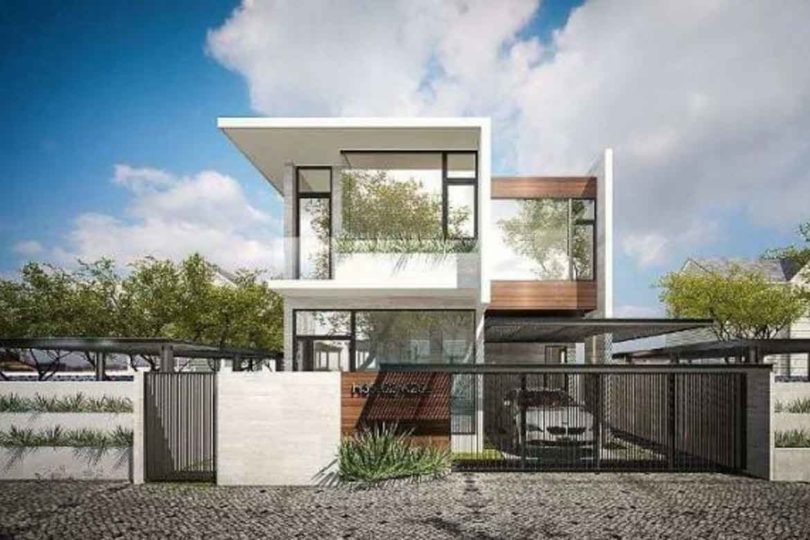History of Minimalist Home Design

Minimalist home design has its roots in the early 20th century, when architects and designers like Ludwig Mies van der Rohe and Le Corbusier began experimenting with simplicity and functionality. However, it wasn’t until the 1990s that minimalism started to gain popularity as a distinct design movement. The rise of Japanese minimalism, led by designers like Tadao Ando and John Pawson, also played a significant role in shaping the minimalist aesthetic.
Key Elements of Minimalist Home Design
So, what makes a home design minimalist? Here are some key elements to consider:
- Simple Color Palette: Minimalist homes often feature a limited color palette, with a focus on neutral tones like white, gray, and beige.
- Clean Lines: Clean lines, minimal ornamentation, and an emphasis on functional simplicity are hallmarks of minimalist design.
- Natural Materials: Natural materials like wood, stone, and plants are often used in minimalist homes to add warmth and texture.
- Minimal Furniture: Minimalist homes typically feature a limited number of furniture pieces, each chosen for its functional simplicity and aesthetic appeal.
- Abundance of Natural Light: Natural light is a key element of minimalist design, with large windows and skylights used to create a sense of openness and airiness.
Benefits of Minimalist Home Design
So, why are people embracing minimalist home design? Here are some benefits to consider:
- Reduced Clutter: Minimalist homes are designed to be clutter-free, which can lead to a more peaceful and organized living space.
- Increased Functionality: By focusing on functional simplicity, minimalist homes can be more efficient and easier to maintain.
- Improved Sustainability: Minimalist homes often feature sustainable materials, energy-efficient systems, and a reduced carbon footprint.
- Enhanced Aesthetic Appeal: Minimalist design can create a sense of calm and serenity, making it perfect for those who value simplicity and elegance.
Latest Trends in Minimalist Home Design
So, what’s new in the world of minimalist home design? Here are some of the latest trends to watch:
- Wellness-Focused Design: With the growing emphasis on wellness, minimalist homes are now incorporating elements like meditation rooms, yoga studios, and air-purifying systems.
- Smart Home Technology: Minimalist homes are now featuring smart home technology, like automated lighting and temperature control, to create a more seamless and efficient living experience.
- Sustainable Materials: The use of sustainable materials, like reclaimed wood and low-VOC paints, is becoming increasingly popular in minimalist home design.
- Biophilic Design: Biophilic design, which incorporates elements of nature, like green walls and living roofs, is a growing trend in minimalist home design.
FAQs
Q: What is minimalist home design?
A: Minimalist home design is a design movement that emphasizes simplicity, clean lines, and a limited color palette, with a focus on functional simplicity and sustainability.
Q: What are the key elements of minimalist home design?
A: The key elements of minimalist home design include a simple color palette, clean lines, natural materials, minimal furniture, and an abundance of natural light.
Q: What are the benefits of minimalist home design?
A: The benefits of minimalist home design include reduced clutter, increased functionality, improved sustainability, and enhanced aesthetic appeal.
Q: How can I incorporate minimalist design into my home?
A: You can incorporate minimalist design into your home by starting with a simple color palette, using natural materials, and selecting functional and aesthetically pleasing furniture pieces.
Q: Is minimalist home design expensive?
A: Minimalist home design can be expensive, depending on the materials and design elements chosen. However, it can also be budget-friendly, with a focus on simplicity and functionality.
Conclusion
Minimalist home design is a growing trend that’s all about simplicity, functionality, and sustainability. By embracing the key elements of minimalist design, homeowners can create a more peaceful, organized, and efficient living space. Whether you’re looking to reduce clutter, improve sustainability, or simply enhance the aesthetic appeal of your home, minimalist design is definitely worth considering. With its emphasis on natural materials, clean lines, and abundant natural light, minimalist home design is a design movement that’s here to stay. So, why not give it a try and experience the many benefits of minimalist home design for yourself?
Closure
Thus, we hope this article has provided valuable insights into Minimalist home design events. We thank you for taking the time to read this article. See you in our next article!